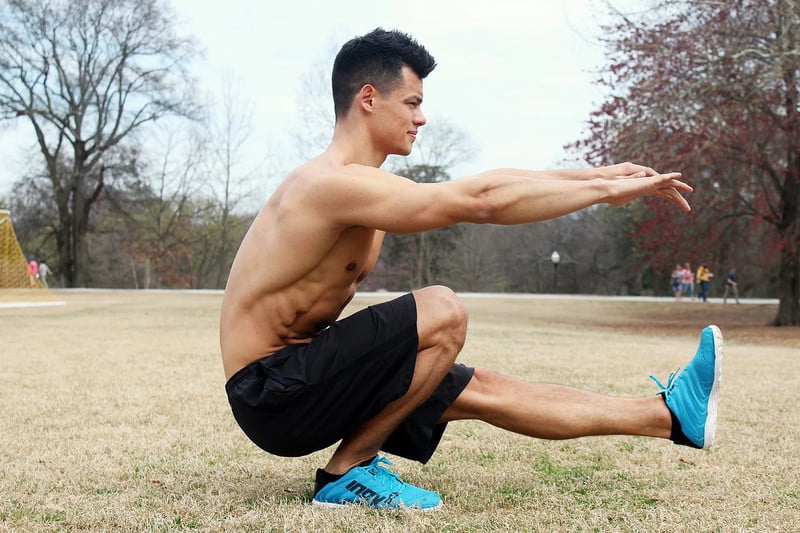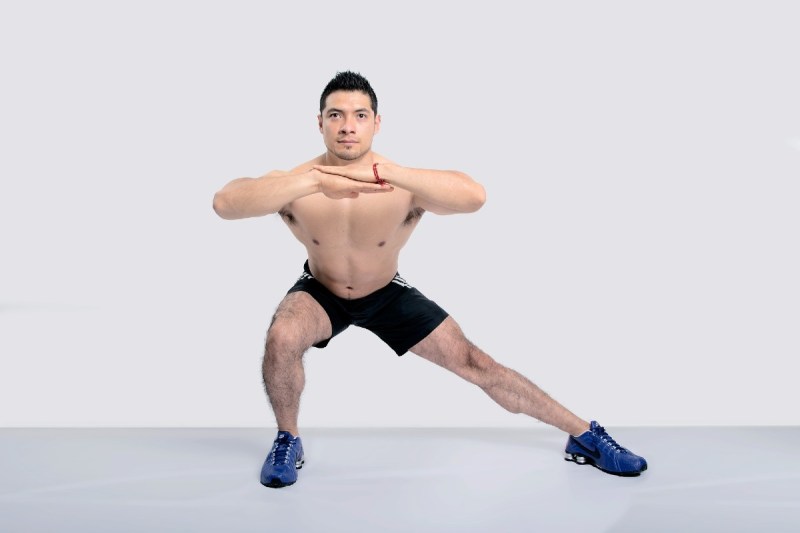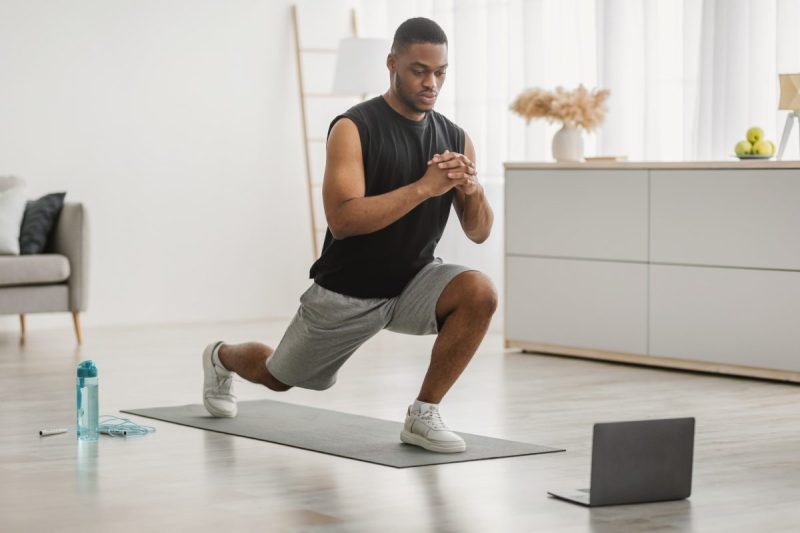
Calisthenics is a form of strength training that uses one’s body weight as the resistance, often requiring little to no equipment. These calisthenics leg exercises help strengthen the muscles of your lower body, as well as your joints. This can help to improve mobility and range of motion, allowing you to perform various types of movements.

Anatomy of the lower body
Various muscle groups in your legs work together to allow you to move and maintain proper posture. Strengthening your leg muscles through leg workouts can give you a strong foundation that allows you to do various types of movements. The quadriceps (quads) are located in front of your thighs, going above your knees. These muscles allow you to extend or flex your knees or, in simpler terms, straighten and bend your legs. The glutes are located behind your hip, where your buttocks are. These are what help you stand upright and allow you to move your body forward.
Your hamstring muscles are located on the back of your thighs. These allow you to walk and climb stairs, amongst other movements. The calf muscles (calves) are located on the back of your lower legs, going behind your shin. Similar to your hamstrings, these muscles allow you to not only walk and run but also jump and stand on your toes.

Can you build muscle with calisthenics?
Yes, scientific research tells us it is possible. In one study, researchers found that breaking up sedentary time through calisthenic exercises allowed for a significant increase in leg muscle strength and balance. In this case, participants also experienced an increase in knee extension. Another study shows similar results but with the additional benefit of relieving symptoms for those who have musculoskeletal conditions in their legs.

7 effective lower body exercises for your routine
1. Wall sit
The wall sit is a very simple exercise that can help build the muscles in your thighs, glutes, and calves. However, it’s easy to do it wrong, so be sure to follow these instructions carefully.
Instructions
- Stand with your back against a wall. Your feet should be shoulder-width apart and about two feet from the wall.
- Slide your back down against the wall until your legs form a 90-degree angle. Your thighs should be parallel to the floor. You may need to adjust the position of your feet slightly further away from the wall.
- Hold this position for 30 to 60 seconds.
- Press through your heels to slowly slide your back up against the wall to return to the starting position.
- Repeat this exercise for 3 rounds.
2. Broad jumps
Although this can be considered a full-body workout on its own, it greatly strengthens your legs and glutes since jumping relies on these muscles.
Instructions
- Start by standing with your feet shoulder-width apart.
- Bend your knees and squat down so your hips are pushed back. Your thighs should be parallel to the floor.
- Push through the balls of both feet to jump up and forward. Swinging your arms back and forth can help create momentum. Aim to jump as far as possible.
- When you land, bend your knees so you are squatting again.
- Repeat for 3 to 10 sets of 5 to 10 reps each.
3. Squats
This classic exercise is great for strengthening the legs’ tendons, bones, and ligaments. It is a functional movement that helps with everyday tasks.
Instructions
- Start by standing with your feet greater hip-width apart. Clasp your hands together in front of your chest.
- Keeping your chest up and shoulders back, push your glutes back and bend your knees. Lower yourself to squat until your knees form a 90-degree ankle.
- Squeeze your glutes and push up into the starting position.
- Continue for 3 sets of 10 to 15 reps.
4. Calf raises
This exercise specifically targets the calves, but it can also build on the ligaments in your lower ankles. There are many variations of calf raises, but we will mostly be focusing on the standing variant to provide as much resistance as possible from body weight only.
Instructions
- Stand with your feet hip-width apart and your toes facing forward.
- Keeping a slight bend in your knees, push yourself up onto the balls of your feet so your heels are off the floor.
- Pause here for a moment before slowly lowering your heels back to the ground.
- Repeat for 3 sets of 15 to 20 reps.
5. Reverse lunges
While regular lunges primarily focus on the quads, reverse lunges place more emphasis on the glutes and hamstrings and may put less stress on your joints.
Instructions
- Stand with your feet shoulder-width apart and your toes facing forward. Keep your gaze directly in front of you.
- Place your hands on your hips and step one leg back directly behind you.
- Bend that back knee so that your front leg bends until both knees are at 90-degree angles. Ensure your torso remains upright.
- To return to the starting position, press through the heels of that back foot to come back to standing.
- Repeat for 3 sets of 8 to 10 reps per leg.
6. Glute bridges
This simple exercise focuses primarily on your glutes, though it can help strengthen your core as well.
Instructions
- Lay down on your back with your knees bent and feet planted on the floor. Your arms will lay flat by your sides.
- Activate your glutes as you lift your hips towards the ceiling as high as you can. Your body should now form a straight line from your knees to your shoulders.
- Hold this position for a few seconds, squeezing your glutes.
- Slowly bring your hips back to the floor before repeating.
- Repeat for 2 sets of 10 to 15 reps each.
7. Walking lunges
This variant of the classic lunge exercise makes it more challenging, yet doing them properly rewards you with stronger quads, hips, and glutes.
Instructions
- Stand with your feet shoulder-width apart and your toes facing forward. Keep your hands at your sides or on your hips.
- Step forward with one leg and bend that knee to 90 degrees. Your back knee should naturally bend as well. Keep your chest up and shoulders back.
- Press through the balls of the feet of your back leg to swing it up and take another step forward so the back leg is now the one in front.
- Continue to alternate which leg is lunging as you walk along a path for 10 to 20 steps. Repeat for 3 rounds.

Sample lower body calisthenics workout
| Exercise | Sets | Reps |
| Squats | 4 | 10-15 |
| Broad Jumps | 4 | 8-12 |
| Reverse Lunges | 3 | 10-12 |
| Glute Bridges | 3 | 10-15 |
| Calf Raises | 3 | 15-20 |
Frequently asked questions
Can I build my legs with calisthenics?
Yes, and the exercises listed above can help. Since your only resistance is body weight with calisthenics, it is very useful to do sets with higher rep ranges to make faster progress.
Is it hard to train legs with calisthenics?
No. There are various calisthenics for beginners that are fairly easy to perform, but a few of these exercises may be too advanced for beginners.



